2019
Immersive smell installations, video works, images, documentary film. Multiple formats, each edition of 3.
Supported by IFF Inc. and Ginkgo Bioworks, Inc. resurrectingthesublime.com.
Editions available.
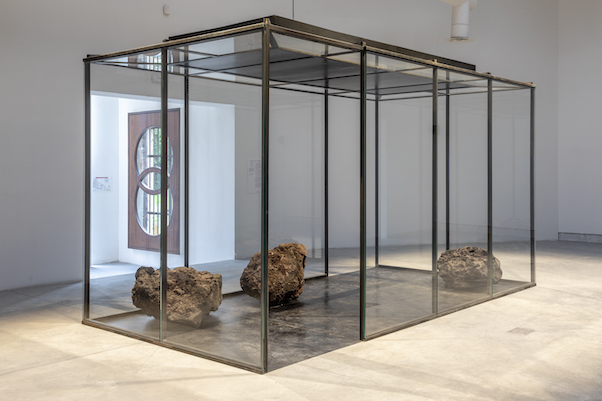
Hibiscadelphus wilderianus Rock (vitrine with smell diffusion, lava boulders, animations, and ambient soundscape).
Installation view, 17th Venice Biennale of Architecture, 2021. Photograph: Francesco Galli. Courtesy La Biennale di Venezia.
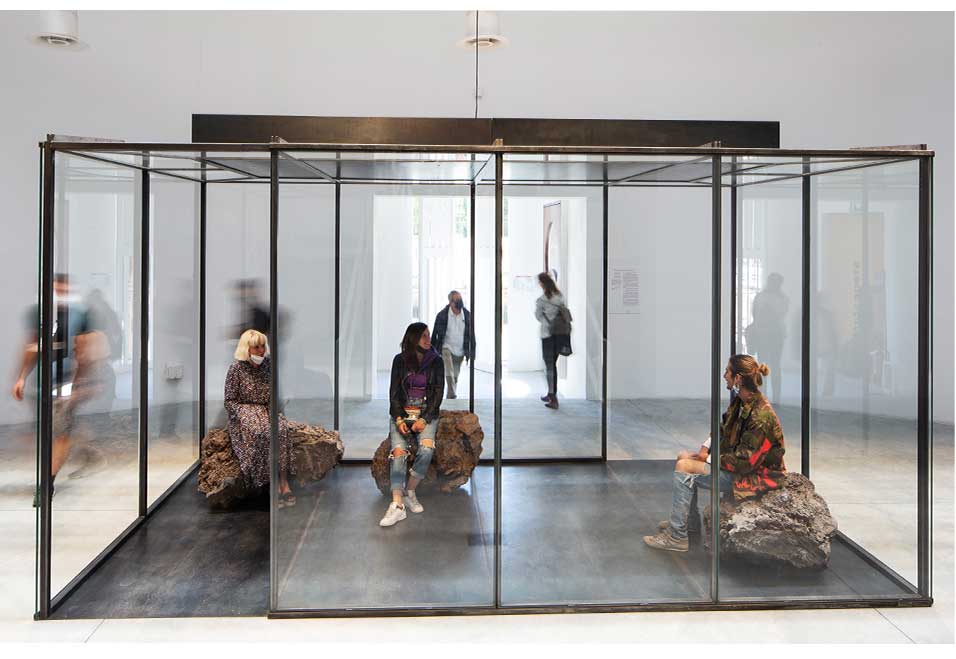
Hibiscadelphus wilderianus Rock (vitrine with smell diffusion, lava boulders, animations, and ambient soundscape).
Installation view, 17th Venice Biennale of Architecture, 2021. Photograph: Francesco Galli. Courtesy La Biennale di Venezia.
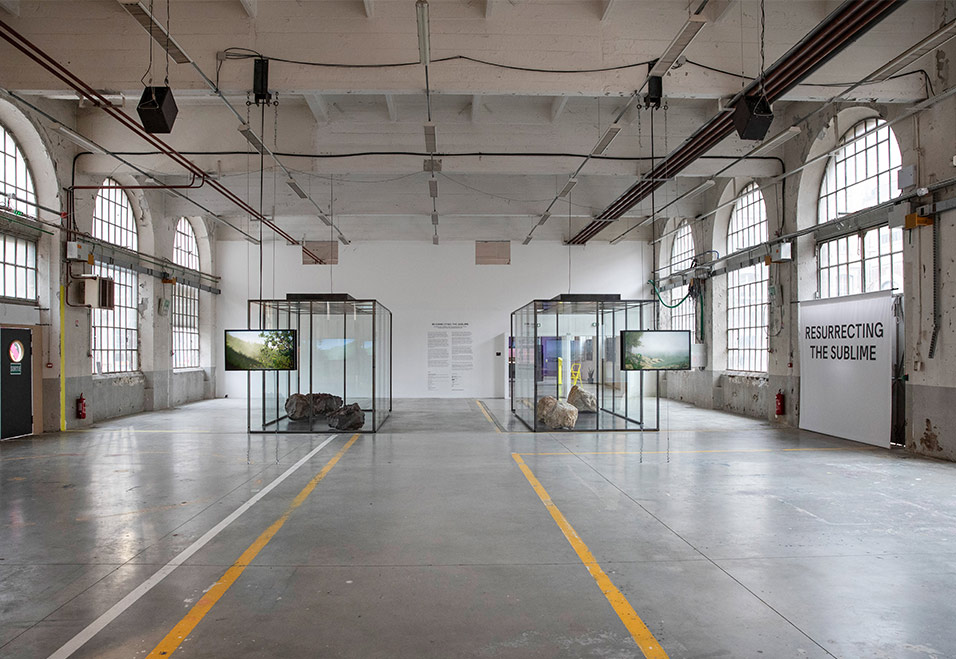
Vitrines with smell diffusion, lava and limestone boulders, animations, and ambient soundscape. Left: Hibiscadelphus wilderianus Rock. Right: Orbexilum stipulatum.
Installation view, Biennale Internationale Design Saint-Étienne, March 2019. Photograph: Pierre Grasset.
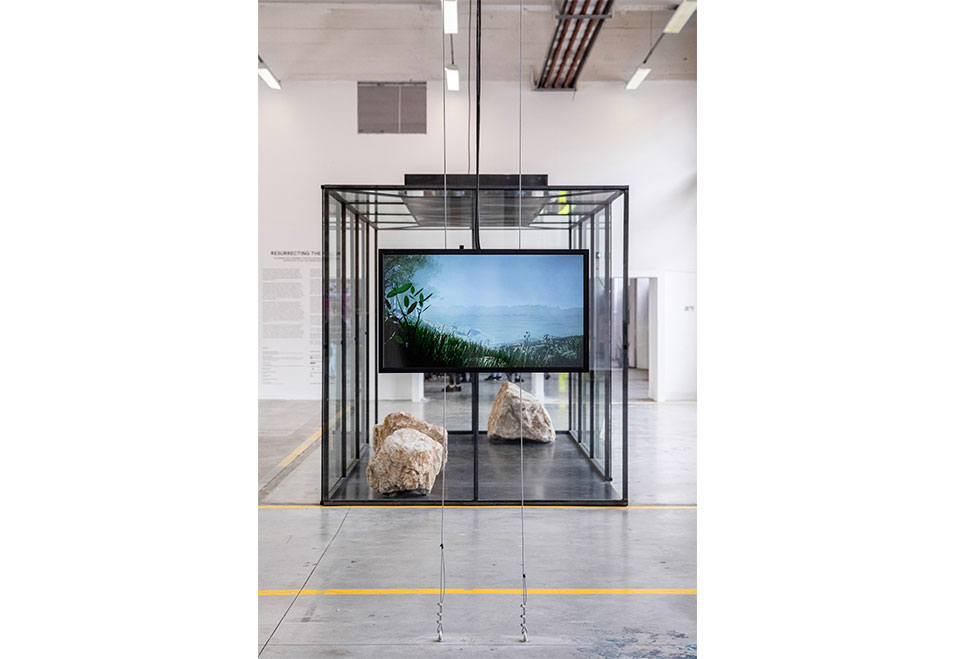
Orbexilum stipulatum (vitrine with smell diffusion, limestone boulders, animation, ambient soundscape).
Installation view, Biennale Internationale Design Saint-Étienne, March 2019. Photograph: Pierre Grasset.

Hibiscadelphus wilderianus Rock (vitrine with smell diffusion, lava boulders, animation, ambient soundscape).
Installation view, Biennale Internationale Design Saint-Étienne, March 2019. Photograph: Pierre Grasset.
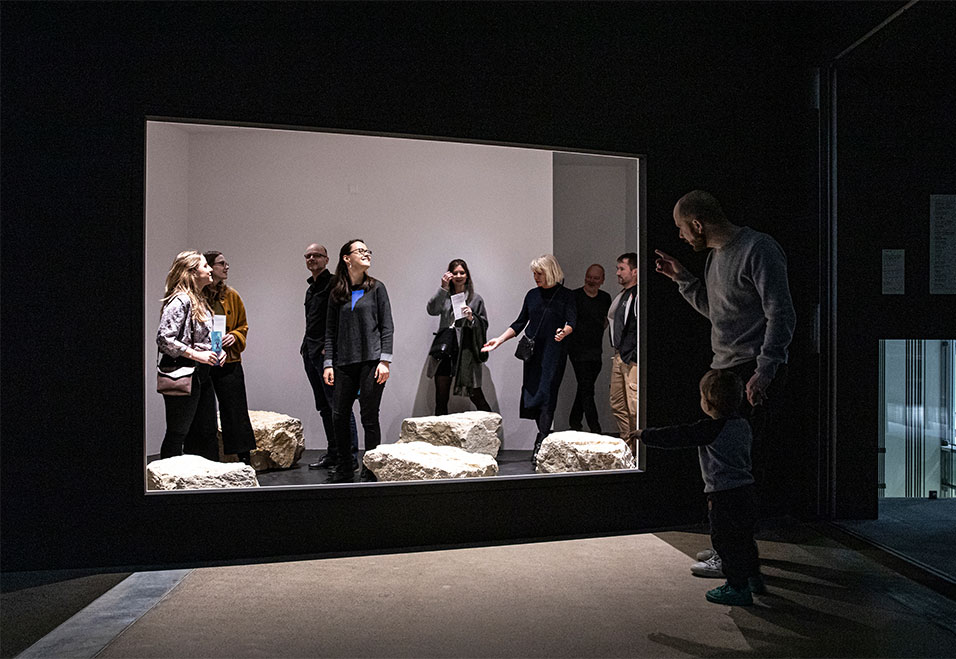
Orbexilum stipulatum (smell diffusion hood, limestone boulder, documentary film, animation).
Installation view, 'Apocalypse - End without End', Natural History Museum, Bern, March 2020. Photograph: © NMBE Flueckinger
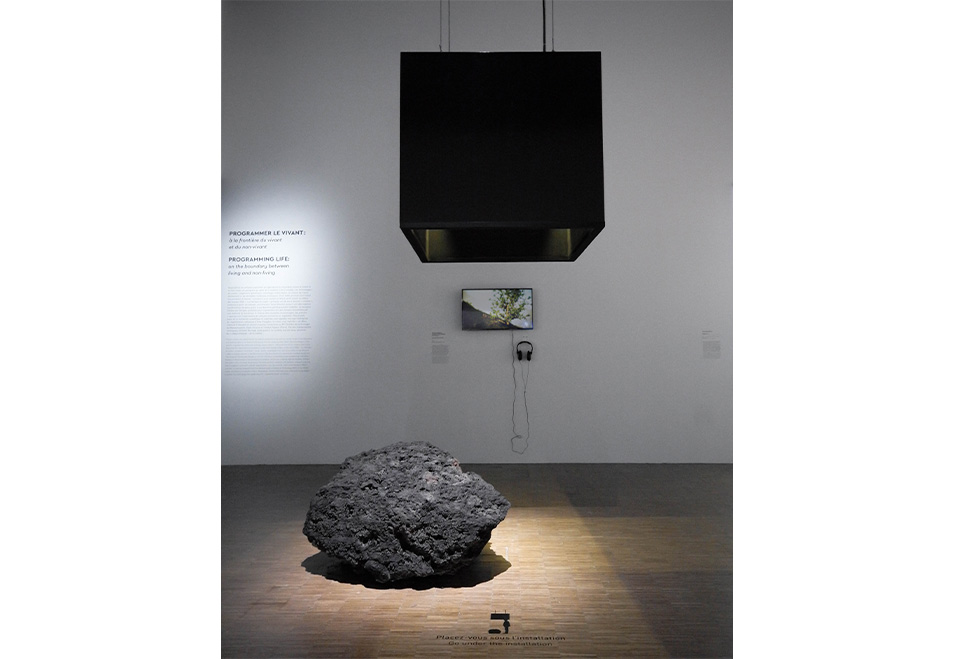
Hibiscadelphus wilderianus Rock (smell diffusion hood, lava boulder, documentary film).
Installation view, 'La Fabrique du Vivant', Centre Pompidou, February 2019.
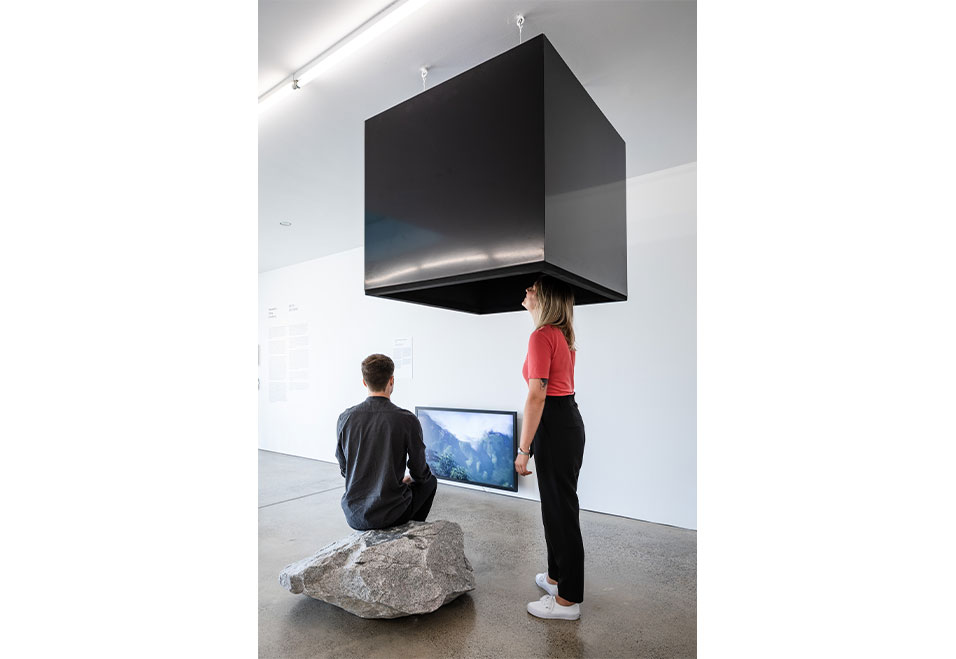
'Leucadendron grandiflorum (Salsb.) R. Br.' (smell diffusion hood, granite boulder, animation).
Installation view, 'Better Nature', Vitra Design Museum, 2019. Photograph: © Vitra Design Museum, Bettina Matthiesen.
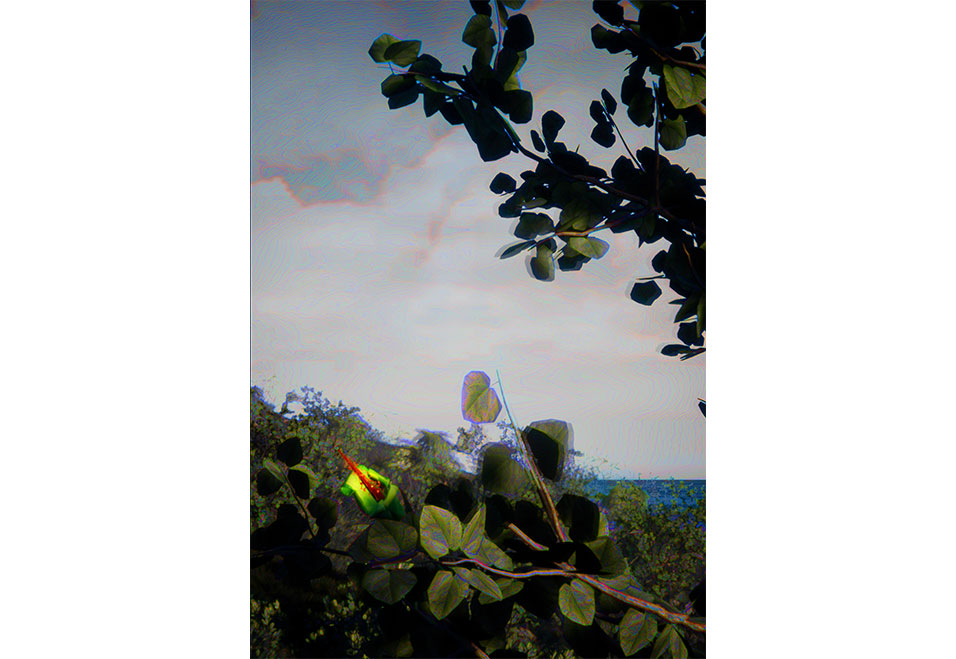
Digital reconstruction of the extinct Hibiscadelphus wilderianus Rock on the southern slopes of Mount Haleakalā, Maui, Hawaii, around the time of its last sighting in 1912. Credit: Christina Agapakis, Alexandra Daisy Ginsberg, Sissel Tolaas, with support from IFF Inc. and Ginkgo Bioworks, Inc. © Alexandra Daisy Ginsberg.
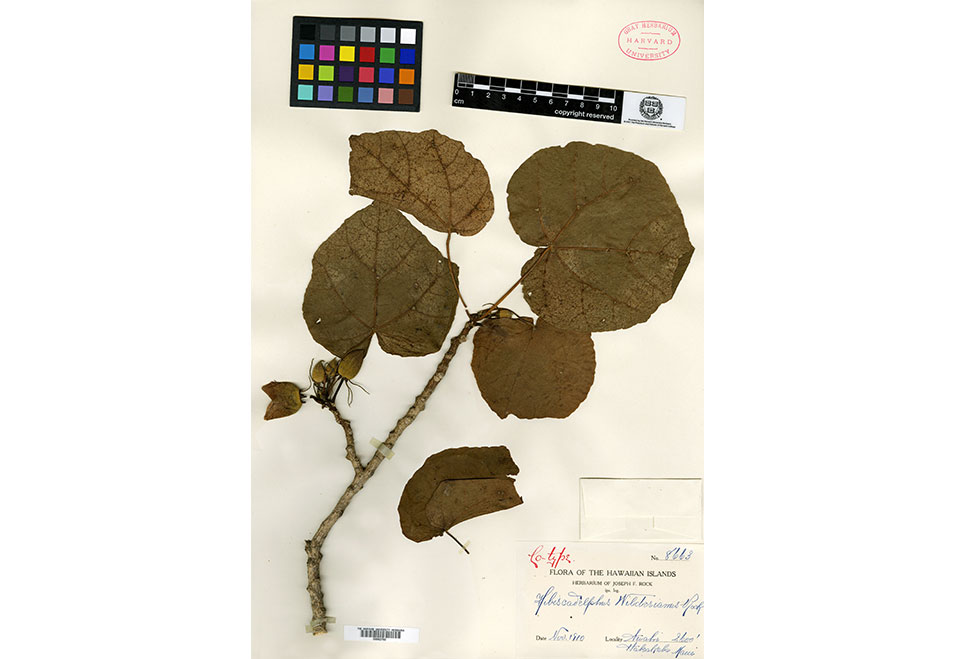
Dried specimen of Hibiscadelphus wilderianus Rock, collected by Gerrit P. Wilder on Maui Island, Hawaii in 1910. Courtesy Gray Herbarium of Harvard University.
Could we ever again smell flowers driven to extinction by humans? This question motivates Resurrecting the Sublime, an ongoing collaboration between artist Dr. Alexandra Daisy Ginsberg, smell researcher and artist Sissel Tolaas, and an interdisciplinary team of researchers and engineers from the biotechnology company Ginkgo Bioworks, led by Creative Director Dr. Christina Agapakis, with the support of IFF Inc. Bringing together cutting-edge scientific research with immersive installations, the first in La Fabrique du Vivant at the Centre Pompidou in Paris (opening 18 February 2019), the project allows us to smell extinct flowers, lost due to colonial activity.
Using tiny amounts of DNA extracted from specimens of three flowers stored at Harvard University’s Herbaria, the Ginkgo team used synthetic biology to predict and resynthesize gene sequences that might encode for fragrance-producing enzymes. Using Ginkgo’s findings, Sissel Tolaas used her expertise to reconstruct the flowers’ smells in her lab, using identical or comparative smell molecules.
The Hibiscadelphus wilderianus Rock, or Maui hau kuahiwi in Hawaiian, was indigenous to ancient lava fields on the southern slopes of Mount Haleakalā, on Maui, Hawaii. Its forest habitat was decimated by colonial cattle ranching, and the final tree was found dying in 1912.
Digital reconstruction of the extinct Hibiscadelphus wilderianus Rock on the southern slopes of Mount Haleakala, Maui, Hawaii, around the time of its last sighting in 1912. Credit: Christina Agapakis, Alexandra Daisy Ginsberg, Sissel Tolaas, with support from IFF Inc. and Ginkgo Bioworks, Inc. © Alexandra Daisy Ginsberg.
The Orbexilum stipulatum, or Falls-of-the-Ohio scurfpea, was last seen in 1881 on Rock Island in the Ohio River, near Louisville, Kentucky, before US Dam No. 41 finally flooded its habitat in the 1920s.
Digital reconstruction of the extinct Orbexilum stipulatum on the shores of Rock Island, in the Ohio River, near Louisville, Kentucky, around the time of its last sighting in 1881. Credit: Christina Agapakis, Alexandra Daisy Ginsberg, Sissel Tolaas, with support from IFF Inc. and Ginkgo Bioworks, Inc. © Alexandra Daisy Ginsberg.
The ‘Leucadendron grandiflorum (Salisb.) R. Br.’, the Wynberg Conebush has a more complex story, which we are still uncovering. It was last seen in London in a collector’s garden in 1805; its habitat on Wynberg Hill, in the shadow of Table Mountain, Cape Town, South Africa, was already lost to colonial vineyards. This flower may prove to be completely lost: the project is bringing to light that specimens around the world may historically have been incorrectly identified.
Digital reconstruction of the extinct ‘Leucadendron grandiflorum (Salisb.) R. Br.’ on Wynberg Hill, behind Table Mountain, Cape Town, South Africa, prior to its last description in 1805. Credit: Christina Agapakis, Alexandra Daisy Ginsberg, Sissel Tolaas, with support from IFF Inc. and Ginkgo Bioworks, Inc. © Alexandra Daisy Ginsberg.
While we can use technology to reach back into the past and learn which smell molecules the flowers may have produced, like the flowers, the amounts of each are also lost. In installations designed by Alexandra Daisy Ginsberg, fragments of each flower’s smell diffuse and mix, introducing contingency: there is no exact smell. The lost landscape is reduced to its geology and the flower’s smell: the human connects the two, and in contrast to a natural history museum, the human becomes the specimen on view.
Using genetic engineering to resurrect the smell of extinct flowers—so that humans may again experience something we have destroyed—is awesome and perhaps terrifying. This dizzying feeling evokes the sublime, an “expression of the unknowable”, an aesthetic state encouraging contemplation of humans’ position amidst the immensity of nature.
This is not de-extinction. Instead, biotechnology, smell, and reconstructed landscapes allow us to once again experience a flower blooming on a forested volcanic slope, in the shadow of a mountain, or on a wild river bank, revealing the interplay of species and places that no longer exist. Resurrecting the Sublime asks us to contemplate our actions, and potentially change them for the future.
Short documentary about the project.
CREDITS
PROJECT PARTNER
Ginkgo Bioworks, Inc.
SUPPORTED BY
IFF Inc.
VITRINE EDITION
Vitrine Edition 1/3 with support from Therme Art Programe and MU Hybrid Art House.
WITH SPECIAL THANKS TO
Dr Michaela Schmull, Harvard University Herbaria, Cambridge
THE FLOWERS
Hibiscadelphus wilderianus, coll. J. F. Rock s.n. from e [east] Maui, Hawaii. The Herbarium of the Arnold Arboretum of Harvard University
‘Leucadendron grandiflorum (Salisb.) R. Br.’, coll. F.G. Meyer and T. R. Dudley s.n., Aug. 15- 20, 1966. The Herbarium of the Arnold Arboretum of Harvard University
Orbexilum stipulatum, coll. C. W. Short, Kentucky and Bot. Garden 1871. Gray Herbarium of Harvard University
GINKGO BIOWORKS, INC.
Dr Christina Agapakis, Natsai Audrey Chieza, Grace Chuang, Jason Kakoyiannis, Dr Jason Kelly, Scott Marr, Krishna Patel, Kit McDonnell, Dr Christian Ridley, Dr Dayal Saran, Atsede Siba, Dr Dawn Thompson, Dr Jue Wang
PALEOGENOMICS
Dr Joshua Kapp and Dr Beth Shapiro, Paleogenomics Lab, University of California, Santa Cruz
DNA SYNTHESIS
Twist Bioscience
ALEXANDRA DAISY GINSBERG
Dr Alexandra Daisy Ginsberg, Ana Maria Nicolaescu, Johanna Just, Ness Lafoy, Ioana Man, Stacie Woolsey, Nicholas Zembashi, Cecilie Gravesen
FILM EDITING
Inferstudio
SOUND DESIGN
Sam Conran
SMELL DIFFUSION TECHNOLOGY
Scentcommunication
SMELL HOOD FABRICATION
Factory Settings
VITRINE EDITION FABRICATION
Tom Cecil Ltd
WITH THANKS FOR PLANT RESEARCH
Dr Nicholas Hind, Dr Gerhard Prenner, Harry Smith, The Herbarium, Royal Botanic Gardens, Kew; Dr Anthony Roberts, Changing Lives Through Nature, Cape Town; Dr Tony Rebelo, SANBI, Cape Town
VENICE PRODUCER
Kat Pollman
Hibiscadelphus wilderianus Rock (vitrine with smell diffusion, lava boulders, animations, and ambient soundscape).
Installation view, 17th Venice Biennale of Architecture, 2021. Photograph: Francesco Galli. Courtesy La Biennale di Venezia.
1/10Digital reconstruction of the extinct Hibiscadelphus wilderianus Rock on the southern slopes of Mount Haleakala, Maui, Hawaii, around the time of its last sighting in 1912. Credit: Christina Agapakis, Alexandra Daisy Ginsberg, Sissel Tolaas, with support from IFF Inc. and Ginkgo Bioworks, Inc. © Alexandra Daisy Ginsberg.
Digital reconstruction of the extinct Orbexilum stipulatum on the shores of Rock Island, in the Ohio River, near Louisville, Kentucky, around the time of its last sighting in 1881. Credit: Christina Agapakis, Alexandra Daisy Ginsberg, Sissel Tolaas, with support from IFF Inc. and Ginkgo Bioworks, Inc. © Alexandra Daisy Ginsberg.
Digital reconstruction of the extinct ‘Leucadendron grandiflorum (Salisb.) R. Br.’ on Wynberg Hill, behind Table Mountain, Cape Town, South Africa, prior to its last description in 1805. Credit: Christina Agapakis, Alexandra Daisy Ginsberg, Sissel Tolaas, with support from IFF Inc. and Ginkgo Bioworks, Inc. © Alexandra Daisy Ginsberg.
Short documentary about the project.